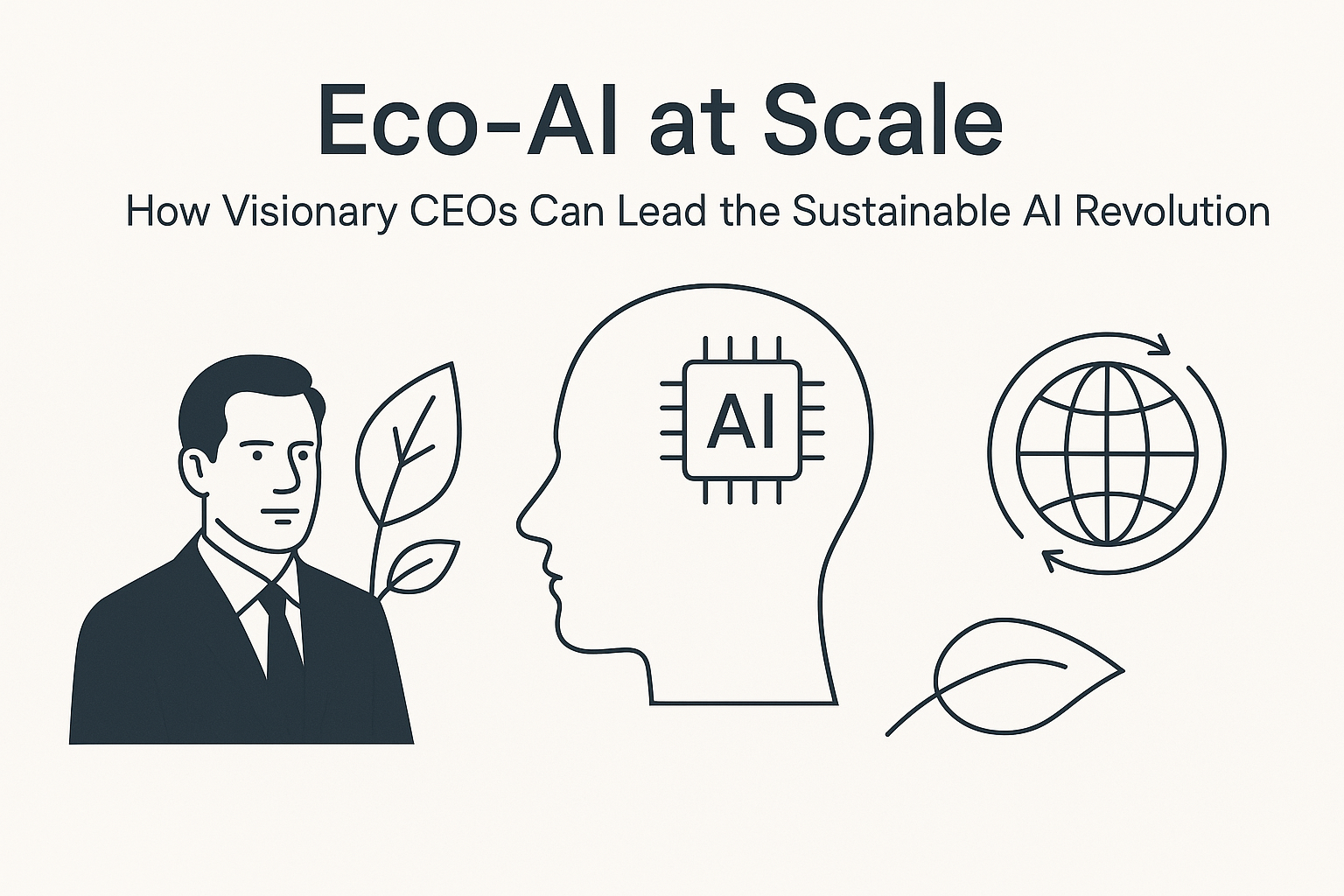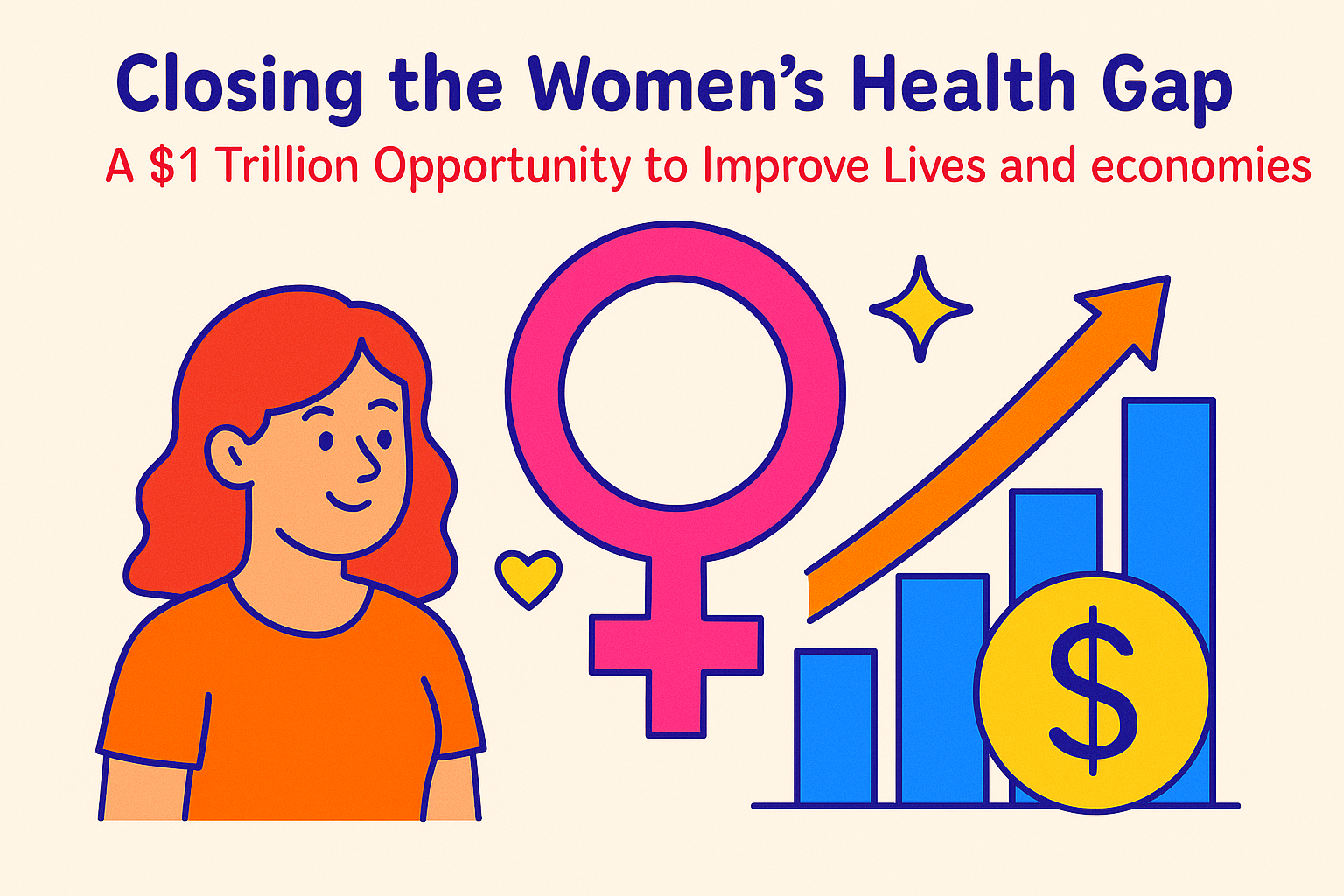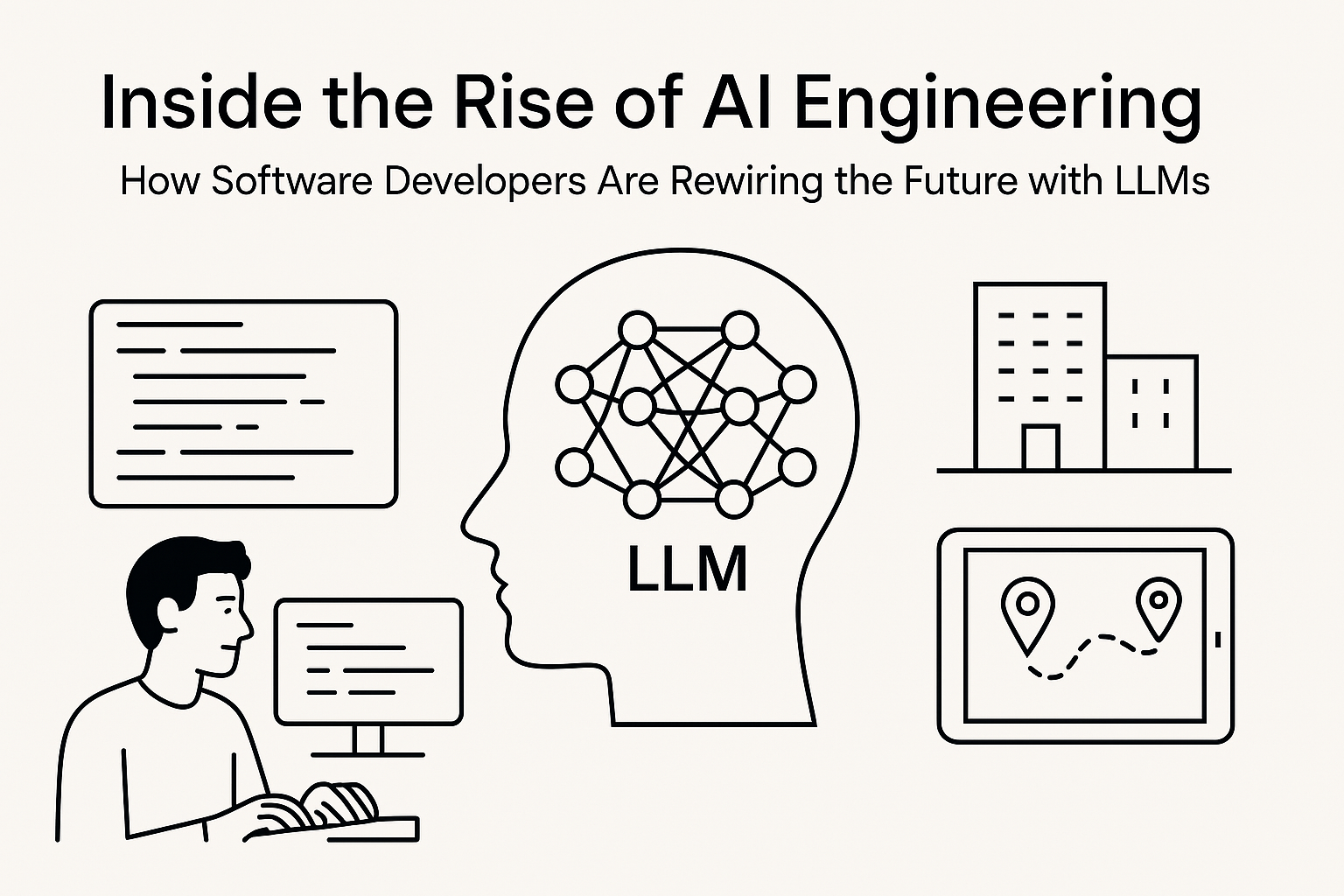Eco-AI at Scale: How Visionary CEOs Can Lead the Sustainable AI Revolution

We stand at the edge of two world-shaping transformations—artificial intelligence and sustainability. Yet, while AI continues its explosive ascent, many organizations are quietly pushing sustainability to the sidelines. That’s a mistake.
In reality, these two forces are not competing. They are converging—and in that convergence lies the most powerful opportunity for forward-looking CEOs and boards: the rise of “Eco-AI.”
Eco-AI is not just a buzzword. It is the disciplined integration of AI into sustainability efforts—where AI not only drives greener operations but is itself designed, deployed, and governed with sustainability in mind. It's the only path to unlocking AI's full power without compromising our planet’s future.
But how do we make Eco-AI real—not just in theory, but at scale, inside organizations that already struggle to balance innovation with emissions goals?
Enter the Virtual Delivery Center (VDC): a new operating model designed to rapidly and sustainably deliver AI capabilities without the usual carbon-heavy overheads.
Let’s explore how these two movements—Eco-AI and the VDC model—can reshape the path ahead for companies willing to lead.
The sustainability spotlight has started to dim in many boardrooms—overshadowed by the urgency of GenAI adoption. But this divergence is artificial. The truth is: AI and sustainability are deeply intertwined, and CEOs who recognize this will outpace competitors.
Sustainability isn't going away. If anything, it's becoming more complex—with tighter regulations, investor scrutiny, supply chain expectations, and rising climate volatility. Simultaneously, AI is moving from experimentation to production—bringing with it massive computational loads and energy requirements.
Together, these realities demand a smarter approach: use AI to solve sustainability challenges—and ensure AI is sustainable by design.
Leading enterprises are already weaving AI into sustainability—and reaping value across operations, supply chains, and customer engagement.
1. Drive Sustainable Customer Value
Customers care about sustainability—but rarely understand which products are actually sustainable. AI can bridge that gap.
IKEA, for example, built an AI recommendation engine that tailors suggestions based on customers’ sustainability preferences. Not only does it deepen engagement, but it nudges behavior toward greener choices—delivering both brand value and emissions reductions.
VDC Insight: These personalized AI experiences can be delivered faster and leaner through a Virtual Delivery Center—combining UX, AI modeling, and sustainability expertise into a unified, outcome-focused team.
2. Build Profitable, Low-Carbon Offerings
AI can track emissions across suppliers and reward reductions in real time. Imagine a food company using digital tools to pay farmers for cutting methane emissions—creating a verified low-carbon product line that commands premium pricing.
This creates a sustainability flywheel: lower emissions → better product → higher margins → reinvested in sustainability.
VDC Insight: This kind of platform requires cross-functional engineering: sensors, edge AI, supply chain modeling, emissions tracking, reward logic, UI dashboards. A VDC can assemble this full-stack team—ready to build and scale.
3. Mitigate Climate Risk with Predictive AI
Climate-related disasters could shave off up to 4% of global GDP by 2050. That’s not a risk—it’s an existential threat to operational resilience.
From mining to agriculture, AI is now being used to predict exposure to floods, fires, heatwaves, and recommend mitigation actions. Satellite data, LLMs, and spatiotemporal modeling come together to deliver actionable insights.
VDC Insight: VDCs bring together climate scientists, data engineers, AI modelers, and industry SMEs in an agile loop—so risk mitigation solutions aren't just built, but embedded into operations.
4. Operationalize Sustainability with Digital Twins
AI-powered digital twins can now model entire factories, supply chains, or cities—allowing real-time analysis of how decisions affect emissions, water use, waste, and cost.
The Singapore government’s Virtual Singapore platform is a case in point—pulling data from sensors, mobility systems, and buildings to optimize energy and emissions city-wide.
VDC Insight: Such digital twins require a multi-disciplinary team—geospatial, IoT, AI, UX—working in coordination. A VDC acts as the delivery pod, ensuring every piece aligns and scales efficiently.
While AI can advance sustainability, it can also endanger it.
Bain & Co projects that IT emissions in consumer product companies could triple by 2030, driven primarily by AI workloads. Consider:
GPT-2 (2019): 1.5 billion parameters
GPT-4 (2023): 1.7 trillion parameters
Video generation: 300x more power than image generation
Corporate AI adoption: 90%+ of large US firms now use GenAI
Efficiency gains in chips and data centers can’t offset this growth. If unchecked, AI could become one of the most power-intensive technologies in enterprise stacks.
And it’s not just internal IT. Scope 3 emissions from third-party tools, agency-built GenAI assets, and consumer usage of AI-enabled apps can balloon a company's carbon footprint.
How do CEOs, CTOs, and CSOs align AI growth with net-zero goals? Three strategic imperatives emerge:
1. Take Tech Emissions Seriously
IT can no longer be the “rounding error” in carbon reports. Track emissions across the entire digital estate—cloud, endpoints, models, edge devices, and partner platforms.
VDC Advantage: VDCs embed sustainability ops from day one—tracking emissions per model, per workload, per deployment. This data-driven accountability is hard to achieve with fragmented teams or contractors.
2. Win the Race to Green Cloud Capacity
Cloud providers are racing to meet surging demand with renewable energy, but supply is finite. Companies that delay may miss out on clean compute, locking into brown-energy contracts.
Act now:
Audit data center efficiency (PUE)
Partner with providers committed to clean power
Use sustainability dashboards to optimize workloads
VDC Advantage: VDCs are cloud-native by design—and can help companies shift workloads to greener regions, reduce idle compute, and build eco-aware scheduling mechanisms.
3. Design AI to Be Energy-Efficient from the Start
Not every employee needs GPT-4. Not every use case needs multi-billion parameter models.
CEOs must push for eco-utilization:
Choose right-sized models (smaller models can use 100x less power)
Cache responses for repeated queries
Use fine-tuned or quantized models (can reduce emissions by 50–70%)
VDC Advantage: VDC teams specialize in prompt engineering, retrieval optimization, and model distillation—delivering smarter performance at lower environmental cost.
The old playbook said: build fast, scale faster.
The new playbook says: build fast, scale smart, stay green.
AI is no longer just an innovation strategy—it’s now a climate strategy, an operations strategy, a customer strategy. CEOs who embed this thinking into their AI initiatives will lead in brand trust, supply chain resilience, and regulatory readiness.
And they won’t do it alone. They’ll do it through Virtual Delivery Centers—elastic, high-performance teams that can design, deliver, and evolve sustainable AI solutions without burdening internal IT or bloating emissions.
The age of Eco-AI is here. The only question is: who will lead it?
The winners will be the organizations that:
Think like startups but scale like enterprises
Use AI not just to optimize margins but to decarbonize operations
Integrate sustainability into every layer of technology
With Eco-AI frameworks and VDC execution models, this future is not theoretical—it’s actionable, today.
The planet demands it. Your customers expect it. And your organization is ready for it.

Closing the women’s health gap could unlock $1 trillion in global economic impact. Explore how equity, innovation, and Virtual Delivery Centers (VDCs) can drive transformation in healthcare and prosperity for all.

Discover how software developers are transitioning into AI engineers, building real-world applications using LLMs. Dive into their tech stacks, challenges, and the rise of Virtual Delivery Centers (VDCs) powering this next wave of innovation.